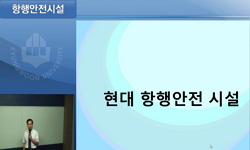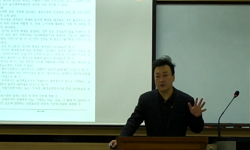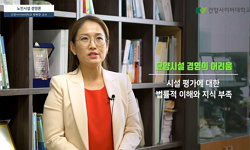Population over 65 accounted for 10.3% of the whole population in Korea as of July of 2008(Statistics of the Aged, Statistics Korea), and Korea has already become an aging society(more than 7%) since 2010. It is expected that Korea will become an aged...
http://chineseinput.net/에서 pinyin(병음)방식으로 중국어를 변환할 수 있습니다.
변환된 중국어를 복사하여 사용하시면 됩니다.
- 中文 을 입력하시려면 zhongwen을 입력하시고 space를누르시면됩니다.
- 北京 을 입력하시려면 beijing을 입력하시고 space를 누르시면 됩니다.
요양병원의 시설 및 인력에 관한 평가기준 설정 연구 : 광주광역시를 중심으로 = A study in definition of evaluation standards for facilities and personnel of a care hospital
한글로보기https://www.riss.kr/link?id=T11985278
- 저자
-
발행사항
광주 : 호남대학교 대학원, 2010
- 학위논문사항
-
발행연도
2010
-
작성언어
한국어
- 주제어
-
발행국(도시)
광주
-
형태사항
iv, 98 p. ; 26cm
- 소장기관
-
0
상세조회 -
0
다운로드
부가정보
다국어 초록 (Multilingual Abstract)
Population over 65 accounted for 10.3% of the whole population in Korea as of July of 2008(Statistics of the Aged, Statistics Korea), and Korea has already become an aging society(more than 7%) since 2010. It is expected that Korea will become an aged society(more than 14%) in ten years(2018) and an super-aged society(more than 20%) in 2026.
Population over 65 in Gwangju, 112,550 persons, accounted for 7.8% of the whole population in the city(1,445,067 persons) as of December, 2008(Statistics of the Aged, Honam Regional Statistics Office), and thus Gwangju was found to be an aging society. The rate of the aged in Gwangju is lower than that of the whole country, 10.3%, yet relatively high compared to those of other cities.
Gwangju is expected to become an aged society in 2021 with 14.4% of senior citizens, and an super-aged society in 2028 with 20.4% of senior citizens while Jeonnam is estimated to turn to an super-aged society in 2010 with 20.1% seniors.
In the aging society, acute diseases and the morbid rate were reduced owing to the improvement in the quality of life and medical technologies while the prevalence rate of chronic degenerative diseases among the elderly over 65 was found to be 86.7%, and senior citizens accounted for approximately 50.8% of the whole domiciliary welfare targets. This situation has been deemed as a problem in the aged health care field, and it is urgent to develop proper policies to deal with it.
Along with increased geriatric welfare facilities, 'geriatric hospitals' made their first appearance in the early 90's to deal with the social needs. Medical facilities, which have different characteristics from ordinary general hospitals, for specially treating the elderly are needed. Geriatric hospitals and care hospitals aim at providing care and rehabilitation treatment for those who cannot go home right after acute care or geriatric patients who are in need of long-term treatment, and thus they should be differentiated from ordinary general hospitals in terms of facilities.
Particularly in terms of geriatric medical care, programs and facilities suitable for characteristics of seniors have not been properly developed even though the proportion of seniors among in-patients has constantly been grown bigger and the state of diseases among the elderly is unique and different.
As for now, almost every single aged medical service is operated mainly by ordinary hospitals. Aged medical welfare facility systems which are commonly used for treating diseases of seniors are not divided into geriatric hospitals and care facilities, and are operated by ordinary hospitals in the same way where other patients are managed. Therefore, the characteristic of aged medical care, which means the prolonged morbidity among seniors compared to younger people suffering from the same disease, has not been considered, and thus seniors have paid high expenses and medical services have not been properly executed. On the ground, not only the effectiveness of aged disease care has been reduced, but also wrong spending of medical expenses has been caused.
The present study needed to research and survey care hospitals including a local geriatric hospital in a systematic way as aged population would be more increased in the future and more local aged medical care welfare facilities were needed in Gwangju. On the ground, the research object of the present thesis was restricted to care hospitals which were currently operated in Gwangju to define assessment standards for reasonable facilities and personnel.
The present thesis is meaningful in differentiating care hospitals and ordinary ones in terms of personnel and facility·equipment standards based on the characteristics of a care hospital, and, by doing so, preparing plans to support the improvement of facilities and personnel of care hospitals.
국문 초록 (Abstract)
우리나라의 총인구 중 65세 이상 인구가 차지하는 비율은 2008년 7월 기준으로(고령자통계, 통계청) 10.3%에 달하고 있으며, 우리나라는 2000년에 이미 ‘고령화 사회(7%이상)’ 에 진입하였다. 향...
우리나라의 총인구 중 65세 이상 인구가 차지하는 비율은 2008년 7월 기준으로(고령자통계, 통계청) 10.3%에 달하고 있으며, 우리나라는 2000년에 이미 ‘고령화 사회(7%이상)’ 에 진입하였다. 향후 10년 후(2018)에는 ‘고령사회(14%이상)’에, 2026년에는 ‘초고령화사회(20%이상)’에 도달할 것으로 전망된다.
광주광역시의 총인구 중 65세 이상 인구가 차지하는 비율은 2008년 12월 기준으로(고령자 인구통계, 광주전남지방통계청) 11만 2550명으로 전체 광주광역시 인구(144만5067명)의 7.8%를 차지하여 이미 고령화 사회로 접어든 것으로 나타났다. 우리나라 전체 고령자 비율 10.3%에는 아직 미치지 못하지만 도시기준으로는 높은 편이다.
그리고 광주광역시는 2021년에는 고령자가 14.4%로 고령사회에, 2028년에는 20.4%로 초고령사회에 도달하고, 참조로 전남은 2010년에 이미 고령자가 20.1%에 달하여 초고령사회가 될 것으로 예측됐다.
본 연구에서는 미래 우리나라의 노인인구의 증가와 광주광역시를 중심으로 한 지역 노인의료복지시설의 확충 필요성에 따라 지역 노인전문병원을 포함한 요양병원에 대한 체계적인 연구와 조사가 필요할 것으로 판단된다. 따라서 본 논문의 연구대상은 광주광역시에서 현재 운영 중인 요양병원으로 한정하여 합리적인 시설 및 인력에 관한 평가기준 설정을 목적으로 하고 있다.
본 연구에서 도출된 주요 결과를 요약하면 다음과 같다.
1. 요양병원 시설·설비 및 인력 평가기준 설정
요양병원의 시설 및 인력에 관한 평가기준을 설정하기 위한 평가항목 개발에 사용한 기존 시설기준 및 연구 자료는 다음과 같다.
① 의료법 시행규칙에 따른 ‘요양병원 시설기준’
② 의료법 시행규칙에 따른 ‘의료인 정원기준’
③ 노인복지법 시행규칙에 따른 ‘노인전문병원의 시설기준 및 직원배치’
④ 한국보건선업진흥원에서 발간한 ‘국내 노인의료복지시설의 소규모 노인의료복지시설 설치 및 운영활성화를 위한 시설설비·인력기준과 운영개선 방안’
⑤ 건강보험심사평가원에서 발표한 ‘요양병원 입원급여 적정성평가’
⑥ 국외 노인의료복지시설에 관한 각종 연구결과(3장 참조)
평가항목 개발을 마련하기 위하여 광주광역시 내에서 운영 중인 요양병원 및 노인전문병원을 대상으로 시설 및 인력 실태를 설문조사하였으며, 이와 병행하여 현장조사를 실시한 결과, 최종적으로 응답한 12개소의 자료를 수집하였다.
2. 요양병원 시설·설비 및 인력 평가기준 도출
광주광역시 소재 노인전문병원(요양병원)을 대상으로 27개 평가항목에 이르는 시설 및 설비, 인력운영 실태를 설문조사 및 현장조사를 실시하여 최종적으로 응답한 12개소의 요양병원 조사 결과 및 이를 종합하여 설정한 등급평가를 제시하였다. 그 결과 조사 대상 요양병원 1등급 2개소, 2등급 6개소, 3등급 2개소, 4등급 2개소로 나타났다. 따라서 시설기준 및 선행 연구 및 논문, 국외시설기준, 설문조사 등을 통하여 비교분석에 따른 가장 적절한 기준 및 조건을 도출하였다.
결과적으로 요양병원의 지속적인 연구와 함께 국내외 노인병원 시설 및 인력에 관한 연구를 통해 향후 요양병원 및 노인전문병원의 건축계획 및 인력계획시 기본적으로 고려해야하는 사항 등을 제시하였다. 요양병원의 특성상 시설·설비 및 인력 기준이 일반병원과 차별성을 두고, 또한 나아가 요양병원의 시설 및 인력 개선에 도움을 주기 위한 방안을 마련하는 것에 그 의의를 둘 수 있을 것이다.
목차 (Table of Contents)
- 제Ⅰ장 서론 1
- 제1절 연구의 배경 및 목적 1
- 1. 연구의 배경 1
- 2. 연구의 목적 2
- 제2절 연구의 방법 및 내용 3
- 제Ⅰ장 서론 1
- 제1절 연구의 배경 및 목적 1
- 1. 연구의 배경 1
- 2. 연구의 목적 2
- 제2절 연구의 방법 및 내용 3
- 1. 기존연구 동향 3
- 2. 연구의 내용 5
- 3. 연구추진 체계 5
- 제Ⅱ장 요양병원의 개념 및 기준 8
- 제1절 노인전문 병원과 요양병원의 개념 8
- 1.노인전문병원의개념 8
- 2. 요양병원의 개념 11
- 3. 요양병원의 성격 12
- 제2절 요양병원의 기능과 현황 15
- 1. 요양병원의 기능 15
- 2. 요양병원 현황 15
- 제3절 요양병원기준 20
- 1. 요양병원 시설검토 20
- 2. 요양병원 인력기준 검토 22
- 제Ⅲ장 국내 외 노인의료 시설기준 및 운영 23
- 제1절 한국 23
- 1. 노인의료 복지시설 시설설비·인력기준 23
- 2. 요양병원 평가기준 26
- 제2절 미국 29
- 1. 장기노인 요양자 현황 29
- 2. 노인의료 복지시설 현황 30
- 3. 노인의료 복지시설 서비스 현황 31
- 4. 관련법규 및 재원 34
- 5. 인력 및 시설기준 37
- 제3절 일본 41
- 1. 장기노인 요양자 현황 41
- 2. 노인보건 복지시설 및 서비스 현황 42
- 3. 인력기준 46
- 4. 노인병원 기능평가 매뉴얼 50
- 제4절 영국 52
- 1. 장기노인 요양자 현황 52
- 2. 노인의료 복지시설 현황 52
- 3. 관련법규 및 재원 55
- 제5절 국가별 시설 및 인력부문 비교 57
- 제Ⅳ장 요양병원 평가기준 설정 60
- 제1절 광주광역시 노인인구와 요양병원의 현황 60
- 1. 광주광역시 노인인구 변화추이 60
- 2. 광주광역시 요양병원 현황 63
- 제2절 요양병원의 시설 및 인력부문에 대한평가 기준설정 65
- 1. 조사대상선정 65
- 2. 평가등급설정 68
- 제3절 요양병원의 시설·설비 및 인력부문 평가현황 69
- 1. 시설·설비 부문 69
- 2. 인력부문 75
- 3. 평가등급 설정 82
- 제Ⅴ장 결론 83
- 참고문헌 91
- ABSTRACT 93
- 부록 : 설문조사 양식 95












